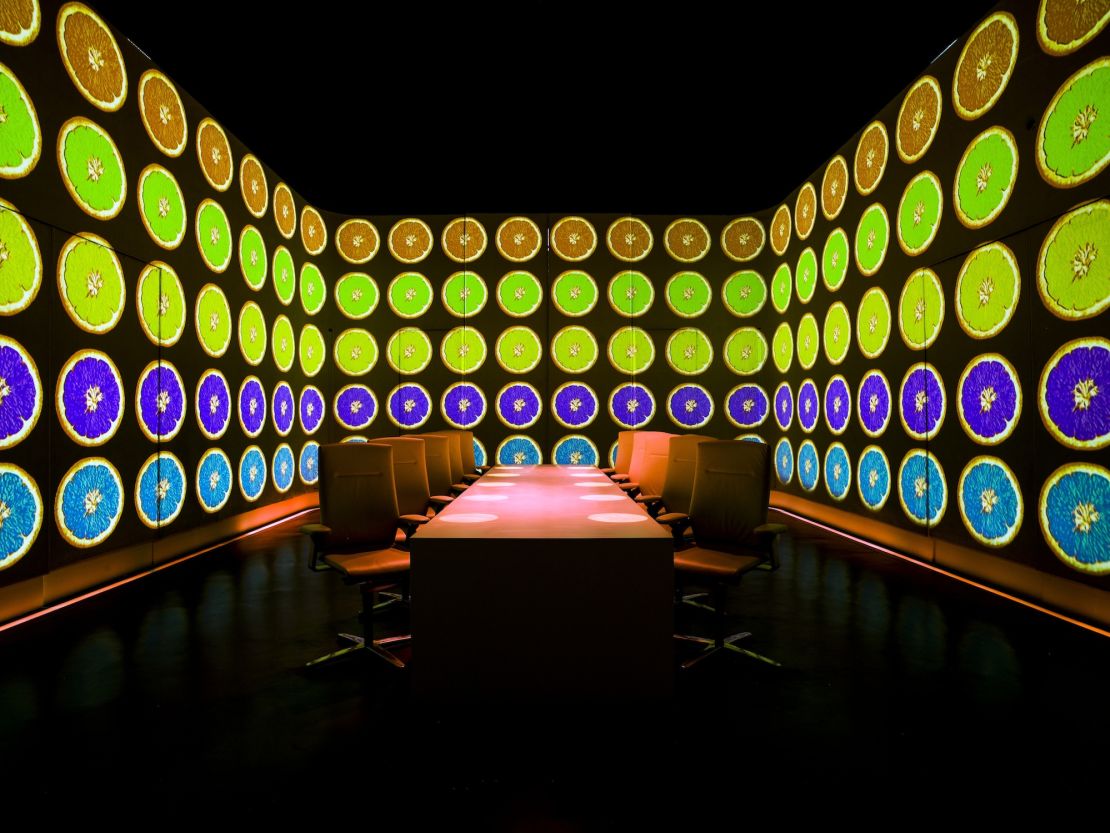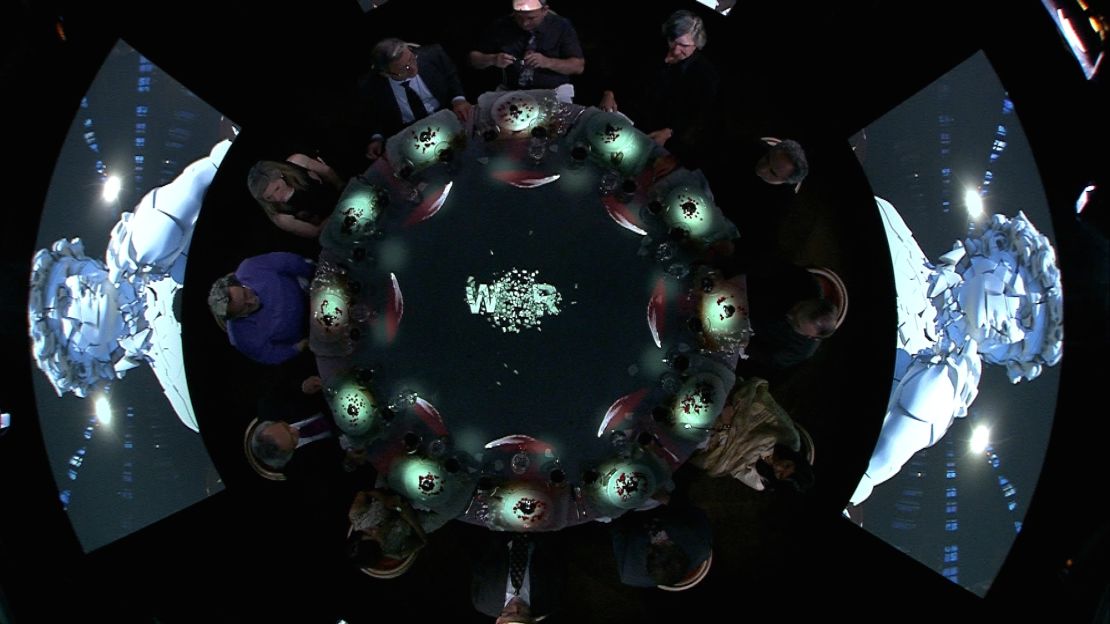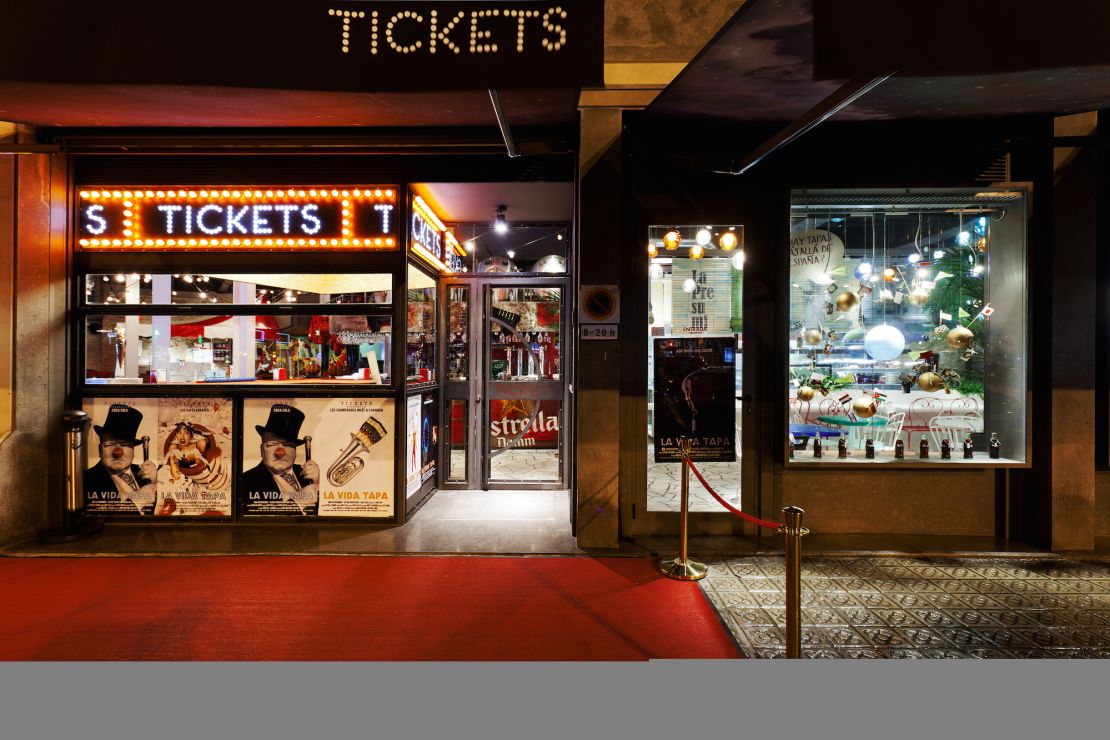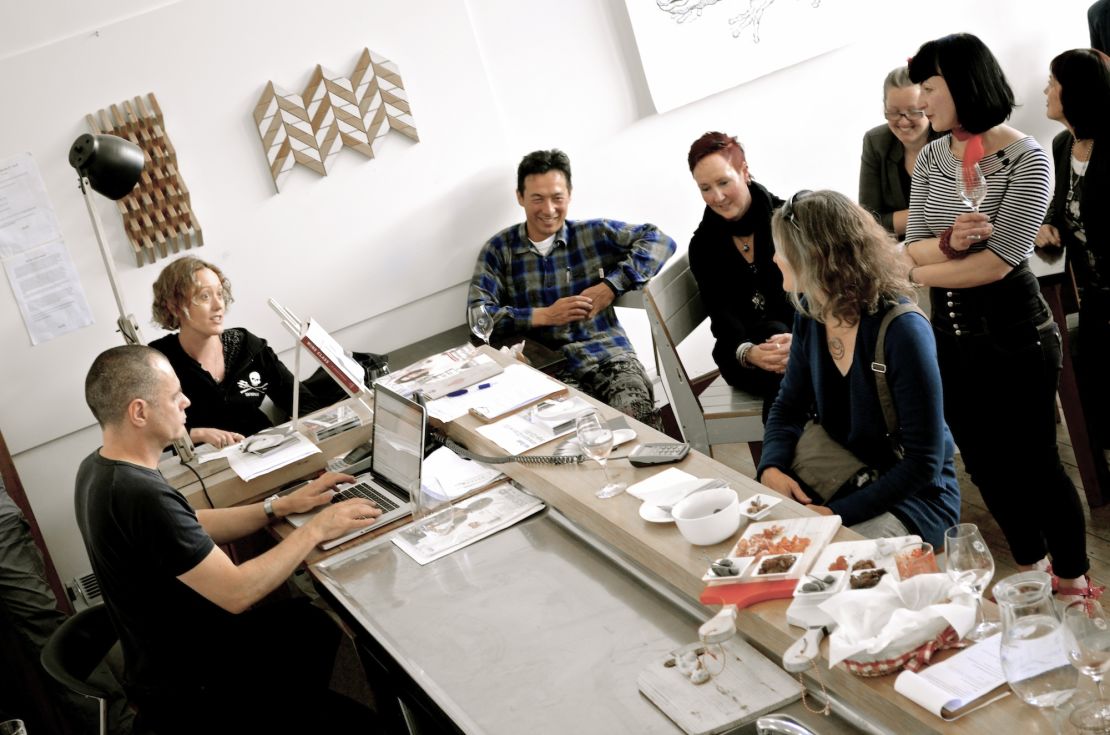Does seafood taste saltier when accompanied by the sound of the sea? Does whiskey have an oakier flavor when you’re sitting by a fireplace? Does a curved chocolate bar melt better than a square one?
According to new research in the emerging field of neurogastronomy: Yes, yes and yes.
Food has historically been discussed almost exclusively in terms of taste. But pioneering studies in neurogastronomy have helped unravel the complex multisensory brain processes that create the range of flavors we experience when eating or drinking.
What started in the lab has leapfrogged into the kitchen.
An increasing number of restaurateurs are experimenting with smells, sounds, textures and other stimuli to show how “off plate” elements play a role in the perception of flavor.
From dining in the dark to eating in a veritable fun house, here are 10 of the world’s best multisensory restaurant experiences.
1. Ultraviolet (Shanghai)

Fifteen years in the making, Ultraviolet opened in May 2012 offering an avant-garde 20-course menu to 10 guests per night from a mysterious building somewhere in Shanghai (guests are escorted from a designated meeting point).
This immersive dining experience from French chef Paul Pairet takes shape within a bare bones room with no decor, no ornaments and no views. Instead, 360-degree wall projections, table projections, scent diffusers and a multichannel speaker system set the tone, enhancing diners’ experience of flavor through a meticulously controlled atmosphere.
Ultraviolet landed at No. 24 on the coveted World’s 50 Best Restaurants list in 2015, making it even more difficult to get into.
Ten seats become available at midnight Shanghai time each night for bookings 90 days in advance.
2. The Fat Duck (Melbourne, Australia)
British food wizard Heston Blumenthal was at the forefront of neurogastronomy and multisensory dining before either concept had a name.
His three-Michelin-starred restaurant, The Fat Duck, left its longtime home in the English village of Bray this year and leaped to the antipodes for a six-month stint at the Crown Towers hotel in Melbourne’s Southbank.
Blumenthal promises the same “multisensory phantasmagoria” diners have come to expect from him, “taking you on a journey of history, nostalgia, memory and emotion.” Dishes include salmon lollies, snail porridge and his signature “Sound of the Sea,” a sculptural plate of seafood, seaweed and panko “sand” that comes with an iPod tucked into a conch shell.
The Fat Duck was scheduled to return to its Bray, Berkshire, location in the latter part of 2015.
3. El Celler de Can Roca (Girona, Spain)

El Celler de Can Roca recently scored “Restaurant” magazine’s coveted title of Best Restaurant in the World, thanks to its perennial quest to push the boundaries of culinary arts.
The famed Catalonian eatery made a splash in 2013 when it staged a 12-course food opera, El Somni, described as a “multidisciplinarian, analogue, digital, real, dreamy, cybernetic and culinary work with opera, electronica, poetry, 3D, performing arts, singing, reflection, painting, films, music and cookery.”
Somehow not exhausted from that endeavor, in 2014 the restaurant took its entire team away from its base in Girona, Spain, for a tour of the Americas to showcase innovative dishes like perfume-inspired desserts and plates with hidden motors.
Beyond all the pomp and circumstance, El Celler de Can Roca is really just a family operation run by three talented brothers. The eldest, Joan, is the head chef. The youngest, Jordi, is the pastry chef. Josep, in the middle, is the sommelier.
4. Sublimotion (Ibiza, Spain)
If you find yourself on the Spanish island of Ibiza with three hours and €1,500 ($1,635) to spare, you can try to book a seat at the world’s most expensive restaurant, Sublimotion, located in the Hard Rock Hotel.
Michelin-starred chef Paco Roncero spent two years developing this multisensory culinary voyage, which marries art, gastronomy and virtual reality thanks to the latest wearable technology from Samsung.
Two dozen chefs fret over 12 diners in a room completely encased in blank screens, which light up with audio-visuals that change throughout the meal.
Ever-shifting stimuli are meant to trick the mind and enhance all five senses as guests embark on a 20-course journey around the world from the bottom of the ocean to the depths of outer space.
Sublimotion, Hard Rock Hotel, Ctra. Playa d’en Bossa, Ibiza, Spain; +34 618 891 358
5. Schloss Schauenstein (Furstenau, Switzerland)
Head chef and proprietor Andreas Caminada put the tiny Swiss town of Furstenau on the global map with Schloss Schauenstein, a three-Michelin-starred restaurant within a six-room hotel of the same name.
Caminada has toyed around with the interactions between aromas, textures and flavors at Schloss Schauenstein for many years. But his latest project, Splendur, is his most ambitious.
The Swiss chef teamed up with Dutch light artist Peter Diem to explore the use of illumination through specially designed “lightplates” that sit atop glowing iPads. Diners receive courses designed around six themes, such as witchcraft, sin and heaven.
All arrive on lightplates that animate the food, subtly weaving information and emotions into the collective experience of flavor.
49 stunning rooftop bars and restaurants
6. Tickets Bar (Barcelona, Spain)

Tickets Bar is the pet project of Ferran Adrià, of elBulli fame, and his brother, Albert.
Their mysterious and hard to book Barcelona outpost (you can try your luck getting “tickets” two months in advance) has caused a stir not only for its inventive and affordable tapas, but for the way they’re served (exploding olives, cotton candy trees).
The atmosphere draws equal inspiration from the theater and the circus, with a nod to Willy Wonka and his overstimulating chocolate factory. It’s a place where chefs toil away at various workstations, waiters prance around like theater ushers and morsels of food arrive with the flair and mystery of a vaudeville act.
7. Alinea (Chicago)
From culinary pyrotechnics to mood-altering lights and menus created to evoke childhood memories, Grant Achatz is never short on innovation.
The Chicago chef has built up an inimitable reputation over the last 10 years by turning Alinea into one of the most theatrical and forward-thinking restaurants in the United States.
One of his most creative dishes is the Green Apple Balloon, an edible inflatable made of apple taffy and helium that’s attached to an “apple leather” string. Another dessert is prepared at the table like a Jackson Pollock painting.
Achatz and restaurateur Nick Kokonas opened a second restaurant, Next, in 2011 and plan to open a third, Roister, by the year’s end.
8. Opaque (San Francisco)
“Dining in the dark” is a trend that swept Europe in the early 2000s and found a happy home in up-for-anything San Francisco by 2008.
Guests at Opaque restaurant, located in a basement near Jefferson Square Park, enjoy a prix-fixe meal in complete darkness served by a crew of blind or visually impaired waiters. The sight deprivation is said to make diners more sensitive to aspects of the cuisine that might otherwise go unnoticed, such as textures, odors and subtle changes in flavor.
Opaque has a second dining-in-the-dark outpost in Los Angeles and stages events at cities across the United States, including San Diego, Dallas and New York.
9. Auricle Wine & Sound Bar (Christchurch, New Zealand)

Christchurch, New Zealand, is the unlikely home of the world’s first dedicated wine and sound bar, which lies within the recently opened Auricle Sonic Arts Gallery. Sound artist and wine critic Jo Burzynska is the brains behind Auricle’s multisensory experiences.
Each month she selects a range of New Zealand and international wines to match the sonorous qualities of Auricle’s changing exhibitions. Rich red wines, for example, can come alive with lower pitched and slower pieces of music. That’s because bass emphasizes the body of a wine and can match the tempo of weightier styles that glide across the palate slowly.
Burzynska organizes regular “wine and music matching workshops,” as well as multi-sensory dining experiences, working alongside visual artists like Toshi Endo and chef Alex Davies.
The Auricle, 35 New Regent St., Christchurch Central, New Zealand; +64 3 260 0501
10. Epicurean (Britannia cruise ship)
Multisensory dining has arrived on the high seas with the new restaurant Epicurean aboard P&O Cruises’ Britannia, which debuted in March 2015 with sailings from Southampton, England.
Epicurean’s menu features dishes that incorporate principles of molecular gastronomy to enhance the taste, texture and appearance of the food. These techniques include freeze drying, precision temperature cooking and the use of liquid nitrogen.
Many dishes – like the herb-roasted chicken with chorizo foam or the fondue of whipped brie with hibiscus and cranberry tisane – are prepared table-side in a performance style P&O claims is “worthy of the West End.”
This article was originally published in August 2015.
Mark Johanson is a freelance travel and culture writer based in Santiago, Chile. You can follow his writing at markjohanson.com.










